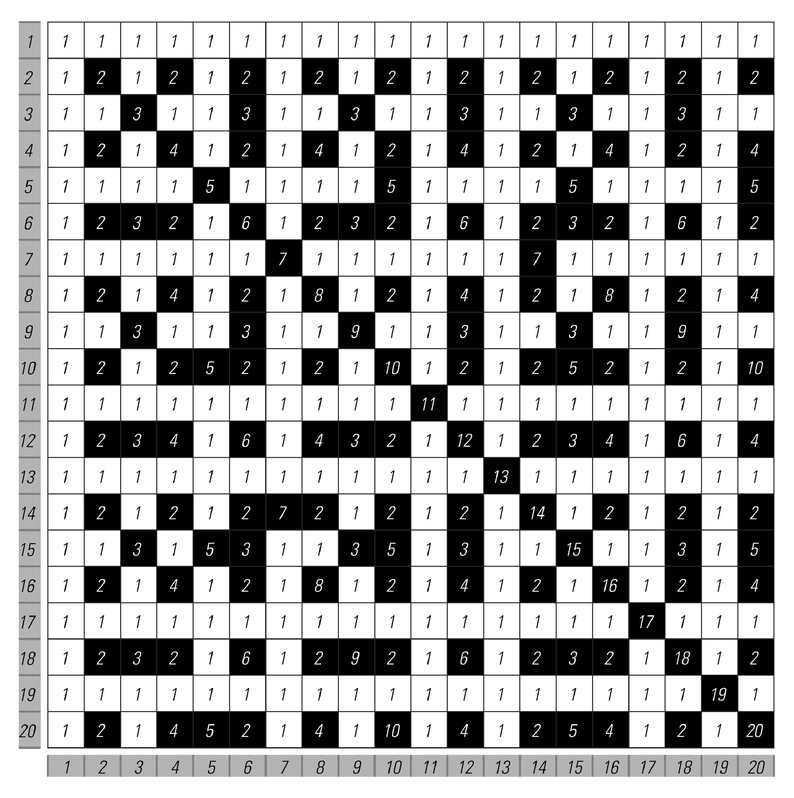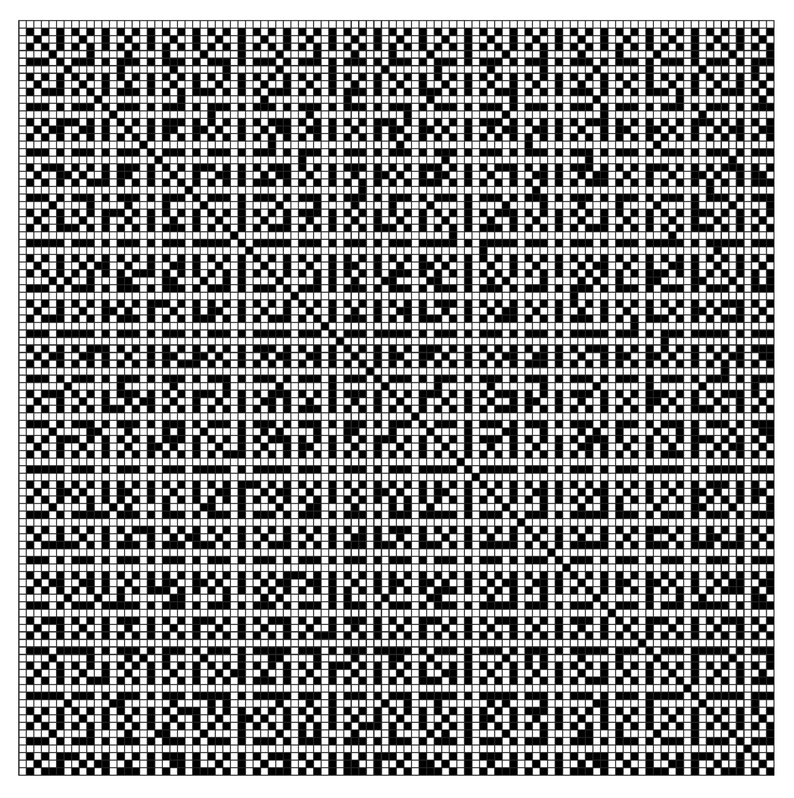numbers that specify the horizontal and vertical positions of the square, the square is white whenever this factor is 1, and is black otherwise.
So what about systems like cellular automata that have definite rules for evolution? Are there ever cases in which patterns generated by such systems seem complex to the eye but can in fact be described by simple mathematical formulas?
I know of one class of examples where this happens, illustrated in the pictures on the next page. The idea is to set up a row of cells corresponding to the digits of a number in a certain base, and then at each step to multiply this number by some fixed factor.
Such a system has many features immediately reminiscent of a cellular automaton. But at least in the case of multiplication by 3 in

 |  |
An example of a pattern that looks complex, but can nevertheless still be represented by a simple mathematical formula. Given the horizontal and vertical positions x and y a square is white when GCD[x, y]1 and is black otherwise. The condition GCD[x, y]1 is equivalent to the statement that x and y are relatively prime, or that no reduction is required to bring the fraction x/y to lowest terms. It can be shown that if the pattern is extended sufficiently far, then any possible local arrangement of black squares will eventually appear—though not necessarily with equal frequency.



